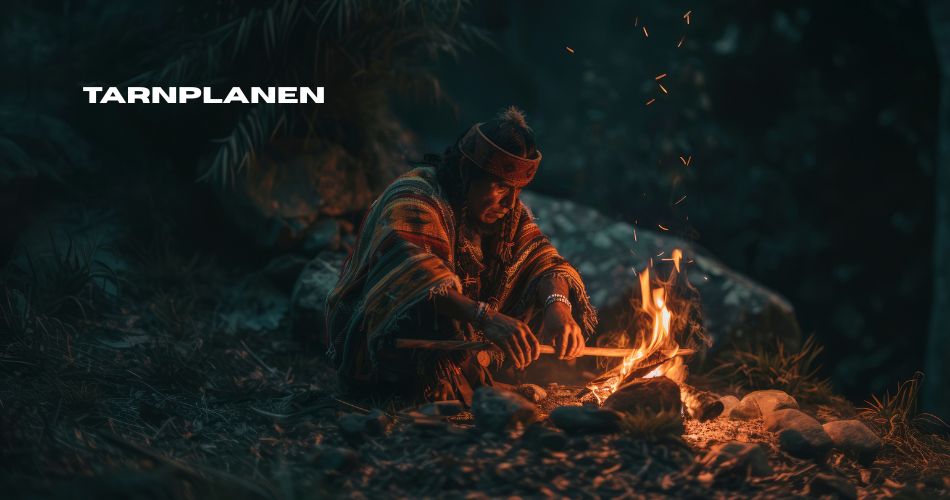Tarnplanen a term rooted in the German language, literally translates to “camouflage tarp.” While the word might be unfamiliar to many outside of Europe, the object it refers to is well known in outdoor, military, and bushcraft circles. A tarnplanen is not your everyday tarp, it’s specifically designed for concealment, durability, and protection in the wild. With its roots in military usage, the tarnplanen has become a versatile and indispensable tool for survivalists, campers, and adventurers. It combines the functionality of a weather-resistant sheet with camouflage patterns to provide both shelter and stealth. Over time, what started as military gear has gained a solid following among civilians who appreciate rugged gear built for real-world conditions.
The Historical Journey of Tarnplanen
The tarnplanen’s history is deeply intertwined with European military innovations, especially during the Cold War era when camouflaged gear became essential for stealth operations. Originally made from heavy canvas with basic water-resistant treatments, the earliest versions were intended to cover equipment, act as makeshift tents, or serve as visual barriers. As time progressed, the need for lighter and more durable materials led to the adoption of synthetic fabrics like polyester and nylon. Soldiers appreciated the ease of transforming tarnplanen into modular shelters, ponchos, or field stretchers. After conflicts ended, surplus tarnplanen flooded civilian markets and quickly caught on with outdoor enthusiasts due to their proven effectiveness.
Design and Materials of Modern Tarnplanen
Modern tarnplanen are engineered with advanced materials that balance weight, durability, and performance. Today, most tarnplanen are made from ripstop nylon or polyester, often coated with polyurethane or silicone to improve water resistance. These coatings not only keep water out but also offer some level of UV protection and abrasion resistance. The camouflage patterns range from classic woodland to digital and snow camo, making them suitable for various environments. Reinforced grommets, double-stitched edges, and multi-layered corners enhance the durability of the tarp, allowing it to withstand the tension from guy lines and stakes. Some tarnplanen even feature reversible colors—camo on one side and reflective silver on the other—for heat control and signaling.
Popular Sizes and Shapes for Different Uses
One of the reasons the tarnplanen remains so popular is the variety of sizes and shapes it comes in. Standard dimensions like 2×3 meters or 3×4 meters are favored for their balance of portability and coverage. These sizes are ideal for solo campers or small groups needing emergency shelter. Larger tarps are available for base camps, group activities, or extended stays in the wild. Shapes vary from the traditional rectangle to custom cuts designed for specific functions such as hammocks, bivy sacks, or tipi-style tents. Regardless of size or shape, every tarnplanen is designed to be adaptable, lightweight, and easy to pack.
Tarnplanen as Shelter: Practical Configurations
One of the most common uses of a tarnplanen is as an emergency or primary shelter. Campers can set up an A-frame shelter by tying a ridgeline between two trees and draping the tarp over it, securing the corners to the ground with stakes or rocks. This setup offers excellent rain protection and ventilation. A lean-to design, with one side raised and the other staked to the ground, provides wind protection and visibility—ideal for campsites near fire pits. Another popular configuration is the diamond pitch, where the tarp is folded diagonally and tied at the corners to create a compact shelter, perfect for hammocks. These configurations demonstrate the tarp’s adaptability to various terrains, weather conditions, and user needs.
Tarnplanen for Bushcraft, Survival, and Hunting
In bushcraft and survival situations, tarnplanen shine as multi-use gear that saves space and weight in a pack. They can act as rain catchers, stretchers, insulation layers, or ground cloths. Their camouflage properties allow bushcrafters to remain hidden while observing wildlife or evading danger. Hunters use tarnplanen to build blinds or conceal gear while moving through forests or fields. The ability to blend into surroundings and adapt to changing needs makes the tarnplanen a staple in every serious survivalist’s kit. It offers the kind of versatility that modern outdoor tools strive for, with the bonus of being easy to replace and widely available.
Urban Applications and Emergency Response
Beyond wilderness use, tarnplanen have applications in urban settings and emergency scenarios. In disaster-struck areas, they provide instant shelter for displaced families. Emergency responders use them to create triage areas, cover sensitive equipment, or cordon off hazardous zones. Homeless shelters and humanitarian groups often distribute tarnplanen during relief efforts due to their low cost and high utility. Construction workers use them to shield tools, cover materials, or block off job sites. Even in backyards, they serve as makeshift awnings, furniture covers, or play tents for children. Their use extends far beyond the woods, proving their importance in modern life.
Custom Modifications and DIY Tips
Many outdoor enthusiasts like to customize their tarnplanen to suit specific needs. By adding paracord loops, Velcro strips, or extra grommets, users can improve setup options and functionality. Reflective tape can be sewn into edges for visibility during nighttime setups. For colder environments, attaching a mylar blanket to the interior surface creates an insulating barrier that traps body heat. Some DIYers coat their tarnplanen with beeswax or eco-friendly waterproofing agents to enhance performance. Creativity knows no bounds when it comes to modifying tarnplanen for personalized use, and these hacks often make a good piece of gear even better.
Benefits and Drawbacks to Consider
The tarnplanen’s benefits are many—it is compact, affordable, highly versatile, and incredibly durable. Its waterproof and windproof capabilities make it an excellent choice for emergency situations. Its camo print allows it to blend into forests, making it great for stealth camping or wildlife photography. However, it isn’t without limitations. It lacks insulation compared to tents, and if not set up properly, it can flap in the wind or pool water in depressions. Beginners might find it tricky to secure in high-wind areas, and cheaper versions may wear out faster. Nonetheless, the advantages far outweigh the downsides for most users.
Where to Buy the Best Tarnplanen
If you’re looking to buy a tarnplanen, your best bet is to check military surplus stores or reputable outdoor brands such as Helikon-Tex, Snugpak, or Mil-Tec. These companies often offer high-quality versions modeled after military designs. Online marketplaces like Amazon and eBay carry a wide variety, from budget-friendly to professional-grade options. Some survival and prepper websites even sell custom designs tailored for extreme conditions. Whether you’re shopping locally or online, always check the material, stitching, and reviews to ensure you’re getting a tarp that will last.
Essential Tarnplanen Care Tips for Durability
Proper maintenance ensures your tarnplanen lasts for years. After each use, shake off dirt and debris and wipe down any mud or sap with a damp cloth. Let it air dry fully before folding to prevent mildew growth. Store it in a cool, dry place away from direct sunlight, which can degrade the fabric over time. It’s a good idea to rotate fold lines occasionally so that the fabric doesn’t wear down in the same spots. If any rips or tears appear, they can be patched with special repair tape or sewn using strong nylon thread. With care, your tarnplanen can serve you well across hundreds of adventures.
Environmental Impact and Sustainability Options
As sustainability becomes more important to outdoor enthusiasts, some manufacturers now offer tarnplanen made from recycled or biodegradable materials. These eco-friendly alternatives are just as functional but reduce the environmental footprint. Look for products with certifications for low-impact manufacturing, and avoid disposable or single-use tarps. Some DIYers repurpose old materials like tents, banners, or upholstery into custom tarnplanen, proving that sustainability and creativity go hand in hand. Being conscious of how we use and dispose of gear like tarnplanen can make a big difference in preserving the wild places we love.
Tarnplanen vs. Other Types of Tarps
When compared to standard polyethylene tarps, tarnplanen offer superior stealth and versatility. Poly tarps may be cheaper, but they tend to rip easily and lack reinforced features. Canvas tarps, on the other hand, are stronger but significantly heavier and prone to mold if not treated properly. Tarnplanen hit the sweet spot by offering balance—they are more durable than poly tarps, lighter than canvas, and equipped with features that make them ideal for field use. The camo print is an added bonus, especially for anyone needing to go unnoticed in nature.
Conclusion
The tarnplanen is more than just a tarp, it’s a multifunctional tool that adapts to countless situations. From providing shelter in the wild to serving as emergency protection in the city, this simple piece of gear proves its worth time and again. It’s the kind of item that, once owned, becomes indispensable. Whether you’re a weekend camper, a seasoned bushcrafter, or someone preparing for the unknown, investing in a good tarnplanen is a decision you won’t regret. With new materials, sustainable options, and endless configurations, this age-old piece of outdoor equipment continues to evolve while staying true to its rugged roots.
Expand Your Knowledge With These Posts:
- Biitland.com Digital Assets: Unlocking the Future of Online Wealth Management
- Washington Commanders vs Philadelphia Eagles Match Player Stats
- Classroom 20x: Revolutionizing the Future of Education
- Maryjays DC Weed Dispensary Juice Bar Washington Reviews
- Adsy.pw/hb5: The Ultimate Guide to Smart URL Shortening in 2025



